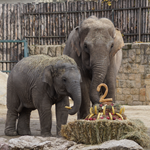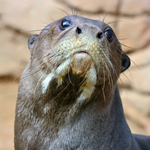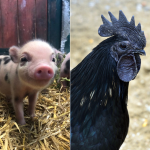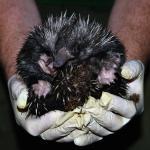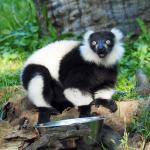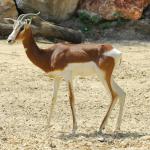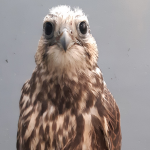- HUNMagyar
News
Family cake eating with the elephantsJanuary 6, 2020
Arun the little elephant has just celebrated his second birthday. In our latest short film we recall the moments of ingesting a birthday cake in the family circle. Those who missed it can make up for it, and those who were there can relive the experience.
Matchmaking for Giant OttersDecember 10, 2019
We've written about our giant otters several times this week, but the latest news is still to be shared: Our female, Cumana, will soon be accompanied by a male animal called Madidi from the Madrid Zoo. He is also on the picture in the dogpile.
Autumn hedgehog rescueDecember 3, 2019
In the autumn, hedgehogs living in the wild are threatened by fires and also, by the lack of time for the young born at the end of summer to reach the right condition before their winter dream begins. Let’s help them together.
Alondra, the perfect predatorNovember 28, 2019
Alondra, a female giant otter, had a few months of chewing on the fish prepared by caretakers at our Zoo but, as part of a resettlement programme, she is now doing the same with the prey in she catches herself in the Ibera National Park, Argentina.
Five years with giant ottersNovember 8, 2019
In September 2014, a little over five years ago, we began to keep rare Brazilian Giant Otters. This week, in several successive writings, we're trying to summarise what has happened to them over the past half-decade.
Calves, piglets, lambs and othersNovember 5, 2019
In addition to the wide variety of wild animals that are mostly native to distant landscapes, we also find it important to introduce and pass on knowledge about domestic animals.
Another short film about the world wonder hatched from an eggOctober 24, 2019
Although we can only show the public a short film now, it is a very important, world-class professional achievement for our echidna puggle, who has developed a great deal in recent months.
Lemur variationsOctober 16, 2019
In Madagascar, the lemurs, belonging to the family of Lemuridae, exist in two different colours: black and white and red and black. Both species are critically endangered, and both can be seen in our Zoo, of course, in the Madagascar House area.
The oldest mhorr gazelle in the worldOctober 8, 2019
Evita is not only the oldest mhorr gazelle we have, but also the oldest mhorr gazelle in the world. By the way, this graceful ungulate is extinct in the wild, and exists only in zoos.
Saker Falcon rescue by co-operationSeptember 24, 2019
Felix, the Saker falcon that had fallen out of the nest, had both legs broken when he came to us, but he was fully healed, and the fully recovered bird has since returned to his natural habitat.
